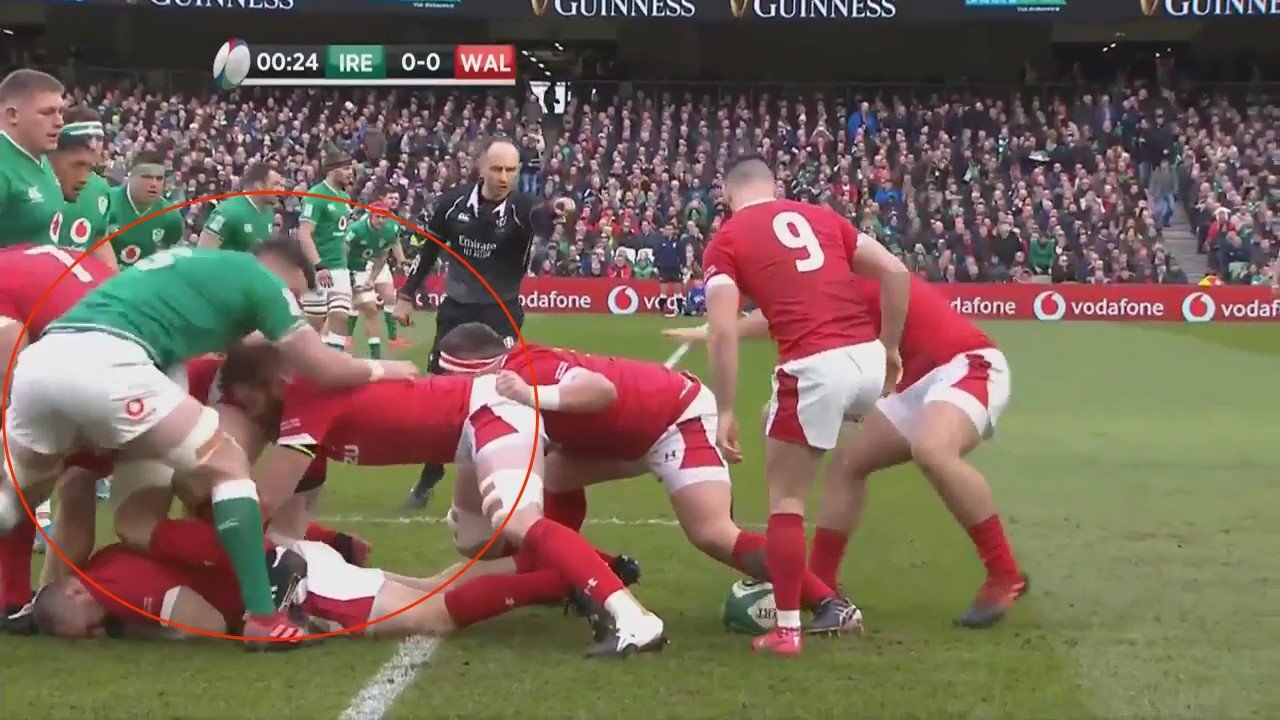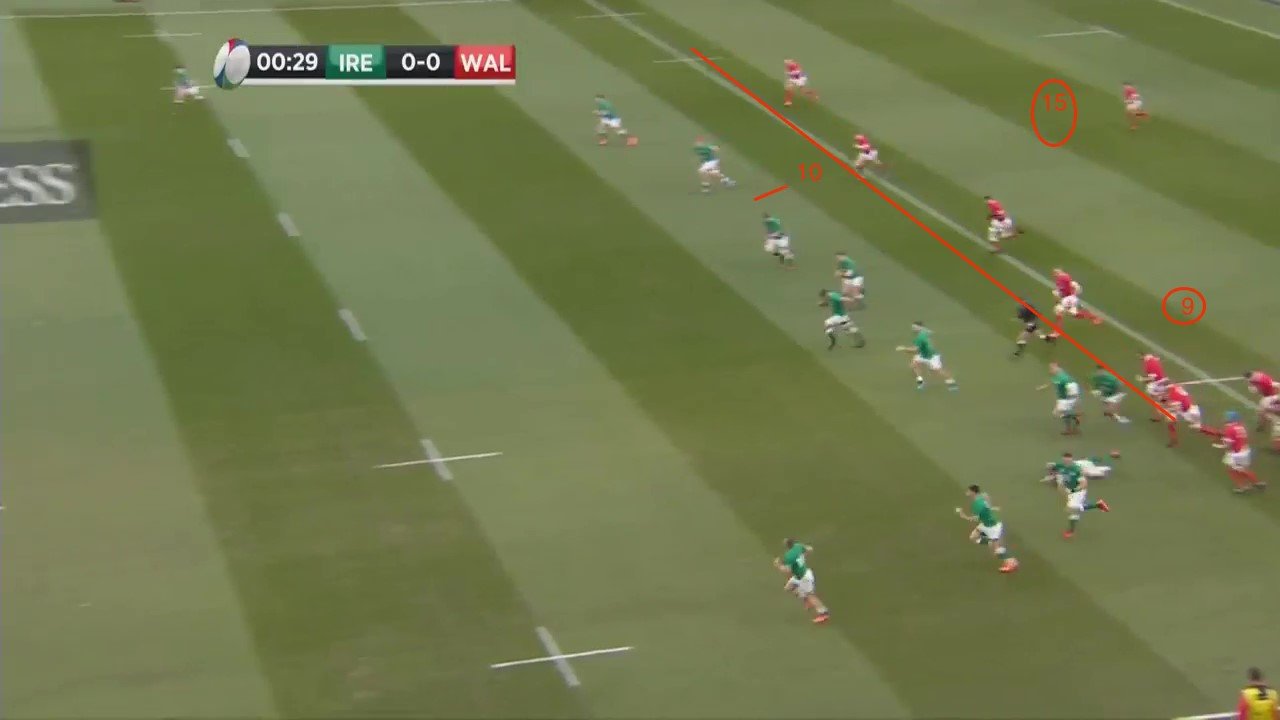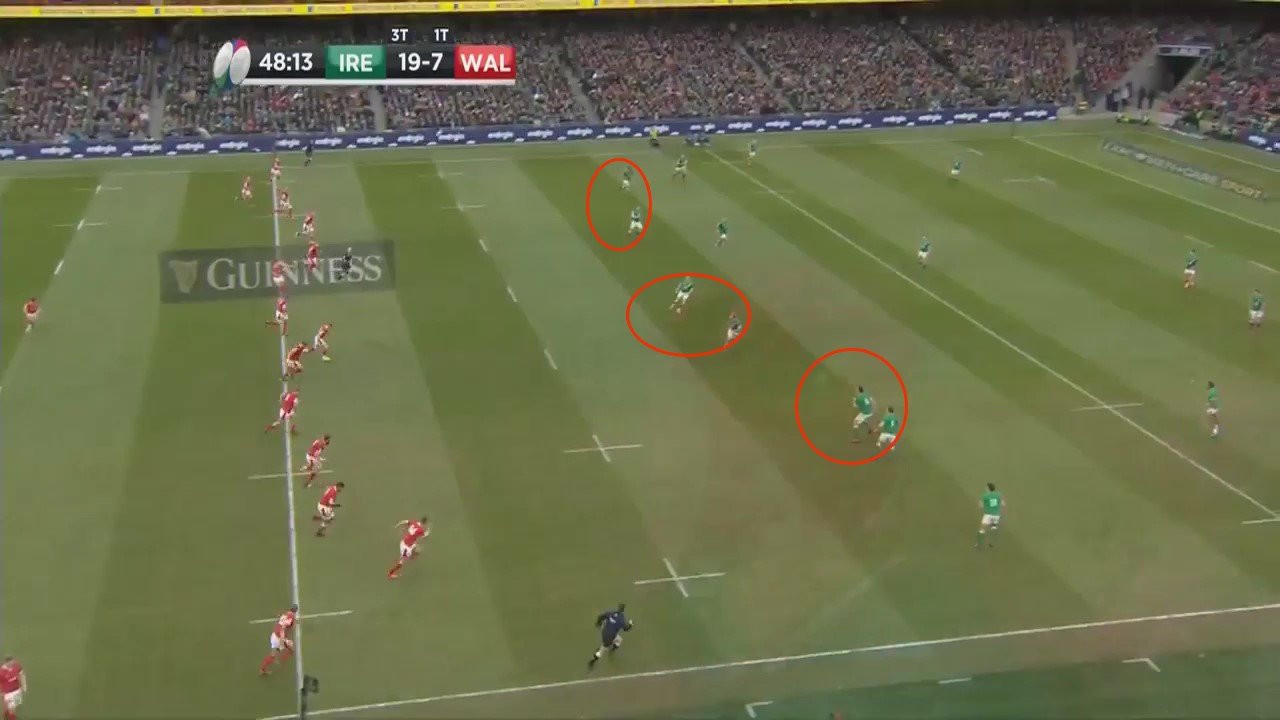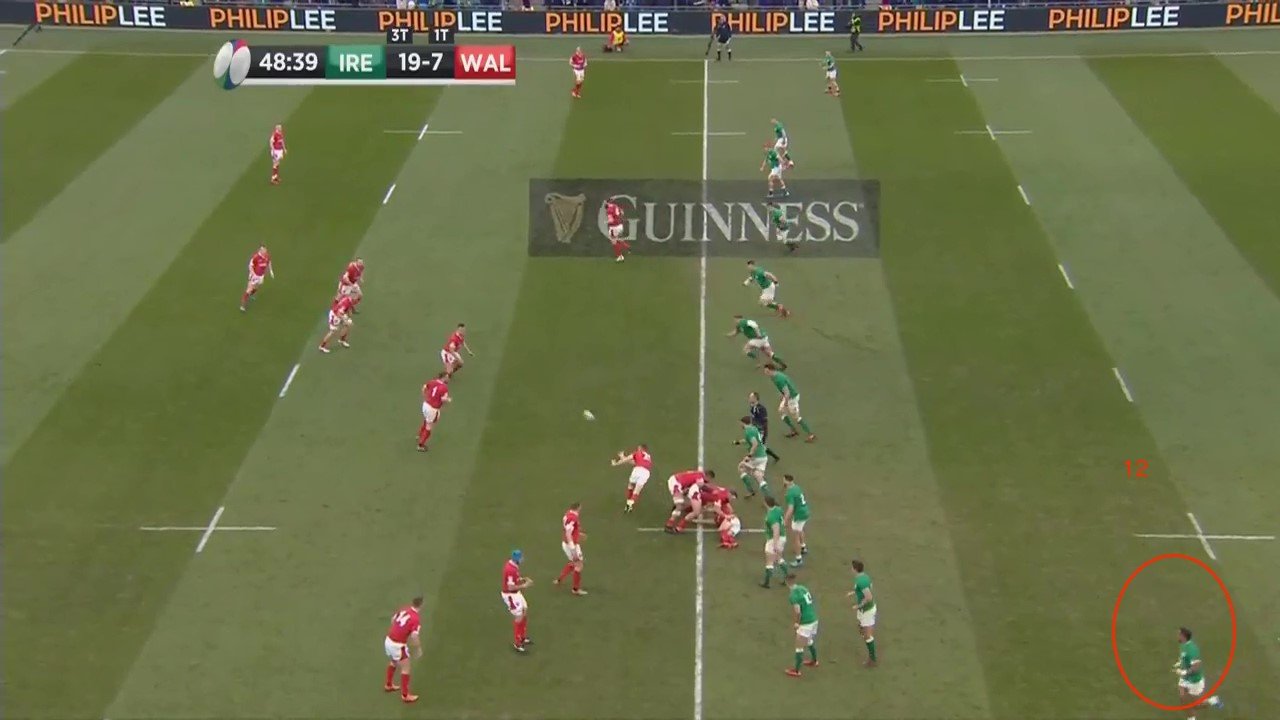Analysis: How Ireland and Wales have used the caterpillar ruck this Six Nations
- 8623

Last week, Omar Mouneimne had a look at exactly why Exeter Chiefs and other sides use the controversial caterpillar box kick.
In case you missed it, here is his full review of how Exeter use it to exit effectively and put the opposition under pressure.
Continue reading below...
This week, Omar has a look at the caterpillar from the kick receipts perspective - an area he dubs the 'nerdy part of the game'.
Omar dives into the recent clash between Ireland and Wales to give you a better understanding of the tactic and kick receipts as a whole.
Watch the video below, or continue to reading.
As mentioned above, the caterpillar box kick annoys many but is so important for teams.
If we look at the caterpillar from a kick receipt perspective and kick receipts, all the nerdy part of the game.
The kick receipts are a defence coach's nightmare because if you drop one you'll be defending 20, 30 meters from your try line and you're going to be under pressure.
So it is receipts really, really important - speaking from experience.
The receipts set up is not only for receiving the ball cleanly but for if you don't receive the ball and the opposition tap it back that you're in defensive shape.
Now, what's defensive shape mean? That means you're tight forwards are closer to the breakdown and your loose forwards are outside the tight forwards with the backs distributed across the park wider to give you the speed to cope with them the wide plays.
So, if you have a look at this clip, during Ireland versus Wales, the first kick receipt is really vital. So Ireland kick off deep to the right and if you look at the setup, Wales go two to two in terms of their pods but they put Hadleigh Parkes at the back to receive the kick off.
It's a pretty interesting because now you've got a back in the breakdown (Parkes) and you've got Josh Adam's cleaning that breakdown. So Wales are now obliged to play another pod to get the speed off the floor and redistributed on the park.
Now, this particular caterpillar is interesting because when the opposition tries to counter ruck and hold you in, they stop your players in the caterpillar from running through and being part of the frontline defensive line or as close to the frontline as possible.
James Ryan is doing just that with his pressure here at the breakdown, even though the ruck is clearly won for Wales. This is called 'wrecking balling'.
The key, for the side in possession, is to hold back on the counter ruck. So take the counter ruck pressure on the front, but slowly start to stand up after you've received the pressure and get into your 'on your marks' sprinting position'.
The Welsh forwards got into this position before Ryan disrupted them and reset before Williams' kicked.

When you find there is no more pressure the scrumhalf will kick with the outside players putting you onside you then sprint from that ruck as a caterpillar spreading into the front line of the defence.
Williams kicks and you will see how those players spread into the first line of defence.
You'll notice that the line post one phase is pretty thin off the Lamour counter-attack and that's because Wales have got nine, 10 and fifteen are covers for the backfield.
So as I said in the preview, Ireland will attack from these situations so Wales might be obliged to play 13 high, in the defensive line and two in the backfield.

So what they have is Williams behind the line and 10 and fifteen at the back as well, which meant they were one man short to cover this wide play of Ireland's and they get found out wide with Stockdale sprinting up the touchline.
From the next clip from up high, you can see that nine's behind the line, Biggar is to the left and Halfpenny to the right.
Personally, I would have had Bigger chase on the the open side to give more speed and width because Parkes was on the lift and then you'd end up having Bigger inside north and you had that extra men and the backfield would be nine and 15 instead, which would give you the ability to cover that space as well.
So no criticism, just an observation.
If you look at the next clip Wales are kicking to Ireland and Ireland received the ball in the two two two pods and then what happens?

Bundee Aki's is in the same place as Hadleigh Parkes but the difference here is Murray decides to kick off a very short caterpillar. His experience pays off here as he goes straight back, doesn't get charged down.
So on the chase Ireland have got a much higher and thicker line with Sexton and Stockdale chasing with Ken Healy on the blind.
So you'll see Sexton and comes up in the blind, Bundee Aki from off the floor comes to the blind post one phase and Ireland have numbers.

They are also higher and harder in the line and they've probably only got two covers, although I don't have the third view here.
You can see they have a much denser line, but simply because the caterpillar was smaller, fewer guys in it, they got in the front line and they had Sexton covering the chase as well.
So in the end, they come up high and they make the tackle in the wide channel.
So yes there are advantages and disadvantages to the way you use the caterpillar to exit but it all boils down to the execution.













